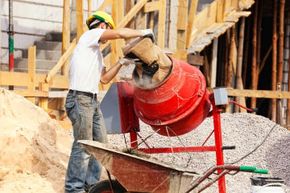The phone at the London headquarters of Novacem Limited is perpetually ringing. And really, it's not hard to see why. Novacem, which grew out of research conducted at Imperial College in the United Kingdom's capital city and is still housed at the university, is developing a cement it says will be carbon negative -- which, as the name suggests, means that the cement actually soaks up more carbon dioxide than is emitted in its production. Hence all the phone calls from green-minded builders.
"People love the idea and ring us up all the time and say, 'We're building this or that; can I get the cement?'" says John Prendergast, Novacem's strategy and planning manager. However, not one person who has eagerly sought out cement from Novacem has hung up the phone happy. "Unfortunately, it's not the sort of project you can turn around overnight," says Prendergast. "There's a lot of science behind it and still more to do." Prendergast says Novacem is hoping to have a pilot product finished by 2014.
Advertisement
Novacem is just one of a number of global companies -- including Calera in California and Canada's Carbon Sense Solutions -- fielding these sorts of calls and, at least for the moment, turning people away. But the fact that there's so much interest in green cement is a good indication of why a host of companies and researchers are trying to make it a reality. And the market for it could be potentially huge, because, frankly, standard Portland cement -- which, when mixed with water and other materials, hardens into concrete, the ubiquitous building material -- is so environmentally unfriendly. Indeed, the production of cement alone accounts for 5 percent of human-generated carbon dioxide emissions, surpassed only by some very obvious culprits, including the burning of fossil fuels for electricity generation, transportation, and the manufacture of iron and steel [source: Rosenwald]. That percentage could easily rise, too, as China and India continue their rapid industrialization and building booms.
Clearly, then, replacing carbon-spewing cement with a substitute that actually reduces emissions would be a tremendous benefit. Read on to learn about different approaches to addressing this very big task.
Advertisement



